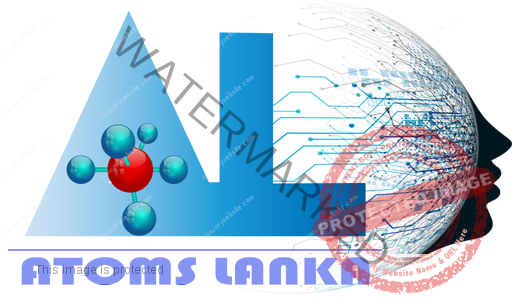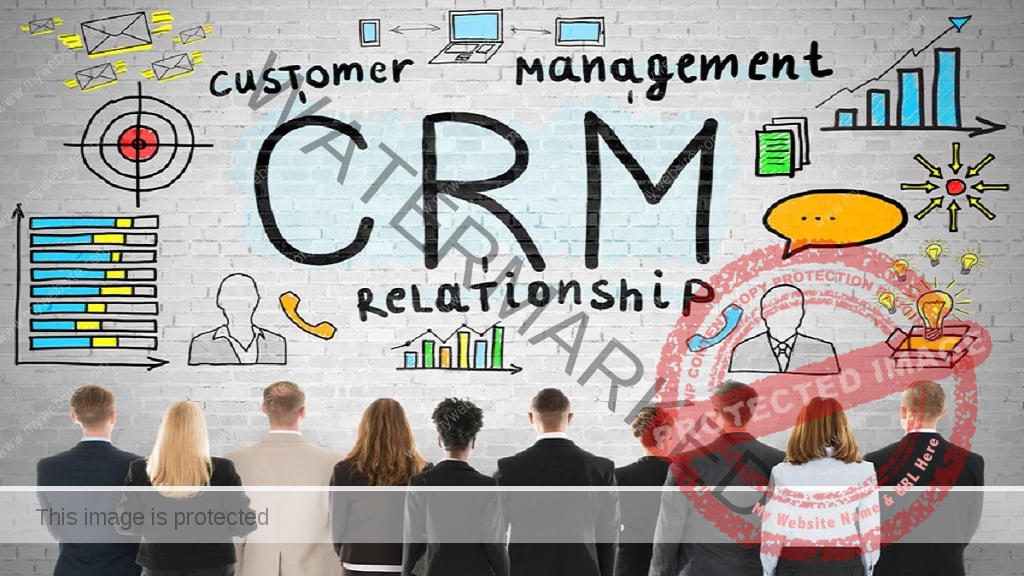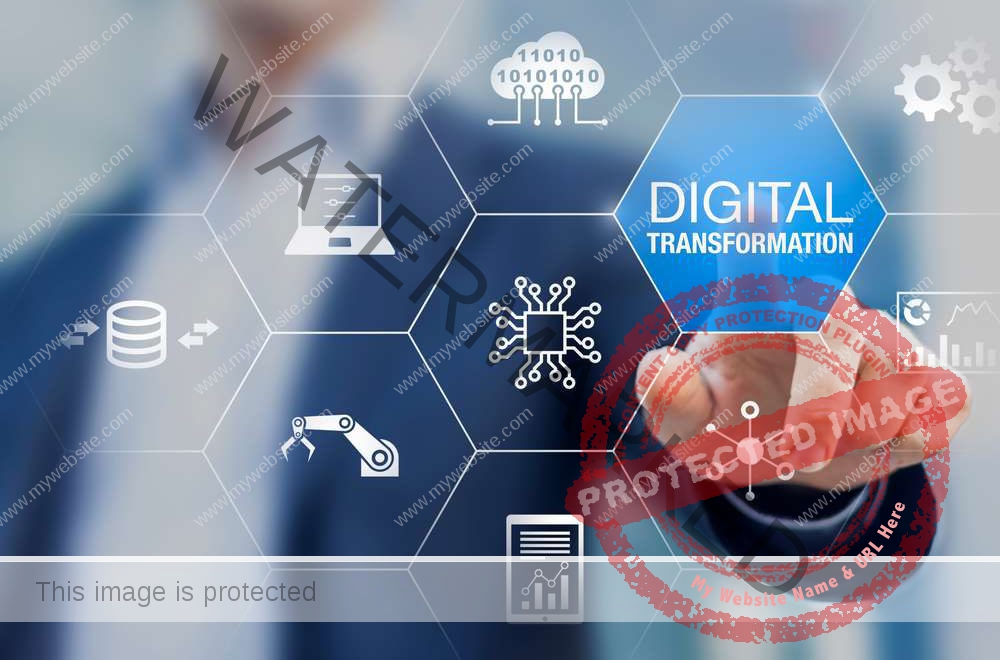App modernization helps businesses to update their existing software into more progressive, scalable, and productive software. In this blog, we discuss and understand how digital transformation and app modernization is transforming existing businesses.
Let us start by understanding app modernization in brief.
Overview of Application Modernization
In today’s world, digital transformation is becoming increasingly important for businesses to stay competitive. Application modernization has emerged as a key strategy for enterprises to modernize their legacy systems and applications. Application modernization is the process of updating or replacing outdated software applications and infrastructure to improve performance, scalability, and business agility.
Why App Modernization is Important for Businesses?
The world is changing rapidly, and businesses must evolve to keep up with these changes. In this digital age, where technology is advancing faster than ever before, businesses that fail to modernize their applications and processes risk being left behind.
One of the primary reasons why app modernization is important for business is that it enables companies to take advantage of emerging technologies. By updating legacy systems and applications, businesses can integrate new tools and applications that are specifically designed to enhance productivity, communication, and collaboration. For example, cloud computing, artificial intelligence, and the Internet of Things (IoT) have the potential to transform how companies operate and deliver services to their applications, businesses can leverage these technologies to improve efficiency and stay competitive.
App modernization can enhance security and compliance for businesses. Legacy systems are often more vulnerable to cyber-attacks and data breaches, which can result in a loss of revenue, damage to reputation, and legal liabilities. By modernizing their applications, businesses can incorporate the latest security measures to protect against threats. They can also ensure that they are compliant with industry regulations, avoiding costly penalties and legal issues.
Application modernization is crucial for businesses that want to stay relevant, competitive, and efficient in today’s digital world. By integrating innovative technologies security and compliance, companies can position themselves for growth and success. With the right strategy and the right tools, app modernization can help businesses to thrive in the future.
Also Read: Digital Transformation: A Comprehensive Guide for Any Business
Common App Modernization Strategies
1. Rehosting:
Rehosting is one of the most popular strategies of app modernization, which involves the process of migrating an existing application from an on-premises data center to a cloud-based infrastructure without making any changes to its code. It is also known as lift-and-shift, as it involves lifting the application from its current location and shipping it to an unfamiliar environment, which is often a public or private cloud.
It provides numerous benefits to organizations, including cost savings, increased scalability, and faster time to market. One major benefit is a significant reduction in operating costs by moving to cloud-native technologies. This is because cloud providers offer flexible pricing models, allowing organizations to pay only for the resources they consume. This results in significant cost savings compared to maintaining an on-premises infrastructure, which can be expensive to maintain and upgrade.
It is a valuable strategy for app modernization, allowing organizations to migrate their applications to the cloud quickly and efficiently without incurring additional costs or losing functionality.
2. Refactoring:
Refactoring is a process of changing the internal structure of an application without modifying its external behavior. It is a vital aspect of application modernization, a process that involves updating or replacing legacy applications, to improve their functionality, reliability, and maintainability. Whether you are dealing with a monolithic application or a complex distributed system, refactoring can help optimize performance and reduce technical debt significantly.
Refactoring is a structured approach for improving the design, code quality, and maintainability of an application. It involves identifying and fixing code smells, eliminating redundancy, removing unnecessary dependencies, and simplifying complex logic. The primary aim of refactoring is to enhance code readability, make it more modular, and improve its scalability. Refactoring can be done at various levels, from methods and classes to entire subsystems, and can be combined with other software engineering techniques, such as code reviews and unit testing.
Refactored app applications are easier to maintain and modify than legacy systems, reducing the cost of operations, enhancing agility, and boosting productivity. The modular design of refactored applications allows for easier integration with other systems, increased scalability, and better responsiveness to changing business requirements.
3. Rebuilding:
Rebuilding is a crucial aspect of application modernization that involves a complete overhaul of an existing application to enhance functionality, performance, scalability, and security. This process is necessary when the existing application has become outdated and is no longer able to meet the evolving needs and requirements of the business.
It usually involves breaking down the application into its components and rebuilding each one from scratch using modern programming languages, frameworks, and tools. The process may also involve re-architecting the application to ensure that it is aligned with the current business goals and objectives.
One of the key benefits of rebuilding is that it allows organizations to take advantage of modern technologies such as cloud computing, analytics, artificial intelligence, and machine learning. By rebuilding the application, organizations can create a more advanced and intelligent system that can deliver new and innovative features and functionalities.
Moreover, rebuilding can also help organizations to improve the user experience, whether it is for customers, employees, or other stakeholders. By leveraging the latest user interface and design techniques, organizations can streamline workflows, enhance user engagement, and increase productivity and efficiency.
Rebuilding is often a complex and time-consuming process that requires careful planning and execution. In many cases, organizations opt to work with third-party vendors or consultants who have the necessary expertise and experience to ensure that the rebuilding process is carried out efficiently and effectively.
How to Choose the Right Application Modernization Strategy for Your Business?
In today’s fast-paced business environment, modernization is essential for staying competitive and meeting the demands of customers. However, choosing the right modernization strategy with the variety of options available. To ensure a successful modernization process, it is important to consider several key factors.
Firstly, it is important to identify the current state of your business and assess the areas that require modernization. This could include outdated technology systems, inefficient processes, or outdated business practices. Once you have a clear idea of the areas that require modernization, you can then start to identify the types of modernization strategies that would suit your business best.
One of the key factors to consider is the scale of modernization required. For some businesses, a complete overhaul may be necessary, while for others, small adjustments may be sufficient. For large-scale modernization, a gradual approach may be more appropriate, while for smaller-scale changes, a more rapid modernization strategy may be more feasible.
Another crucial factor to consider is the type of technology that is most appropriate for your business. This could include cloud-based systems, mobile technology, or artificial intelligence. Careful consideration must be given to the benefits and drawbacks of each technology, as well as the compatibility with your existing systems.
It is important to consider the level of investment required for the modernization process. This includes the technology’s cost and the resources required for training, implementation, and ongoing maintenance. It is crucial to keep in mind the long-term benefits and return on investment, as well as clear communication with customers regarding any changes in products or services.
1. Creating a modernization roadmap:
In today’s fast-changing business environment, every company faces the challenge of keeping up with the latest software technologies. To overcome this challenge, businesses need to undergo application modernization. Application modernization is a process of upgrading or revamping existing legacy applications to enhance their functionality, flexibility, and security. To start this process, companies need to create a roadmap outlining the entire modernization process. Here are some of the guidelines on how to create an application modernization roadmap:
2. Identify the objectives and goals of modernization:
The first step is to clearly define the objectives and goals of the modernization process. Identify the problems and challenges that need to be fixed and determine the expected outcomes after the modernization process. This will help you to prioritize the applications that need to be modernized first.
3. Evaluate all applications:
Analyze all the applications used in your company and determine if they are outdated or if they are still delivering value. Categorize applications as critical, important, or non-essential based on their importance to the business. This categorization will help you prioritize which applications need to be modernized first.
4. Understand current and future business needs:
Identify the business needs and requirements that the modernized applications should meet. Evaluate current and future business requirements, as technology has changed rapidly, and future business needs should be considered during modernization.
5. Choose the right modernization strategy:
Select the appropriate modernization strategy for each application based on its criticality and complexity, whether it is a simple update, rehosting, re-platforming, refactoring. Rearchitecting or rebuilding from scratch. Understanding the modernization strategy and its methodology will help you estimate the time and effort required for modernization.
6. Assess risks and benefits:
Assess both the risks and benefits of each modernization strategy, including the impact on the organization, the process, the technology, and the cost. Create a risk and benefits analysis report, and based on the output, decide which modernization strategy for an application is appropriate.
7. Create a roadmap document:
Based on the above steps, create a detailed roadmap document that identifies the timeline, modernization strategy, cost, and scope for each application. Prioritize each modernization project based on its urgency and importance and identify the dependencies between each modernization project.
Testing and Validating the Modernized Application
Testing and validation are crucial steps in the software development cycle. In this section, we see how to test and validate modernized applications thoroughly.
To begin with, testing and validating modernized applications is analyzing the requirements for the application. This involves identifying the user requirements, functional requirements, technical specifications, and performance goals. This analysis helps create the test plan, which should be based on the requirements and should cover all aspects of the application’s functionality, including data migration, automated workflows, and analytics.
Once the test plan is created, the next step is to carry out the testing process. The testing process involves four stages: unit testing, integration testing, system testing, and acceptance testing. Each stage verifies a particular aspect of the application’s functionality.
Challenges in Application Modernization
As technology advances, organizations must modernize their applications to improve functionality, performance, and user experience.
The process of application modernization involves redeveloping, migrating, or re-hosting legacy applications to leverage modern technology and improve efficiency. However, this process can be a little challenging. Companies must overcome these challenges to ensure a successful modernization strategy.
One of the most significant challenges organizations face during application modernization is data migration. Data is often one of the most significant assets for a business, and migrating can be a complex and cumbersome process. Organizations must identify and assess the data migration risks and put and put measures in place to ensure data integrity during the modernization process.
Another significant challenge is the difficulty of integrating disparate systems. Legacy applications often have integrations that have evolved, and unraveling these integrations to create a nimble environment without breaking them is a significant challenge for organizations.
The cost of modernizing legacy systems is also a significant challenge. Implementing modern technologies can be an expensive proposition, and the cost must be justified by the potential business benefits. Organizations must, therefore, conduct a comprehensive assessment of the total cost of ownership of the modernized application and weigh the benefits against the expenses to ensure the modernization process’s success.
Security and compliance are also essential considerations for organizations when modernizing their applications. The modernized application must adhere to security and compliance regulations, and the modernization process must consider security as a top priority.
The challenges associated with application modernization are diverse and significant. Organizations must identify and overcome these challenges to create modernized applications that provide enhanced user experiences, increased efficiency, and greater business value. By doing so, they would ensure that their modernization efforts lead to long-term success.
Migrating and Deploying the Modernized Application
Migrating and deploying modernized applications can be a daunting task, especially for organizations that lack the necessary technical expertise and resources to undertake such initiatives. However, with proper planning and execution, organizations can efficiently move their applications from legacy infrastructure to modern systems, thereby boosting their agility, scalability, and flexibility, while enhancing their overall digital transformation.
Evaluation of existing system:
Organizations need to analyze their existing application infrastructure to determine the components that require modernization, such as database networking and storage systems. This requires an extensive evaluation of the current system, including the application architecture, coding techniques, and integration with other systems. Once the analysis is complete, organizations can create a comprehensive strategy that outlines the entire migration process from start to finish.
Selection of platform and approach:
Next, organizations must choose the right platform and deployment approach. This decision depends on several factors such as the application type, industry regulations, security policies, and the desired level of control over the infrastructure. For instance, some applications may require a hybrid development model that combines on-premises and cloud-based resources, while others may only require a cloud-based deployment. The platform chosen should have features such as powerful automation and scalability that allow for the efficient and seamless deployment of modernized applications.
Develop testing plan:
Thirdly, organizations must create a comprehensive testing plan that ensures their newly modernized applications run seamlessly and meet performance expectations. This testing should occur at various stages of the migration process to identify and address any potential issues promptly. Testing should also include end-to-end testing and user acceptance testing to ensure the application meets the expectations of the end users.
Data migration strategy:
Finally, organizations must have a robust data migration strategy to move the application data from the legacy infrastructure to the new modernized systems. This strategy should involve data classification, cleansing, and verification to ensure data quality, accuracy, and consistency. Data migration requires a detailed plan that considers data sensitivity and regulatory requirements.
Migrating and deploying modernized applications requires extensive planning, rigorous testing, and sound technical expertise. Organizations must invest in a highly detailed strategy, choose the right platform and approach, carry out comprehensive testing, and have a robust data migration strategy to ensure the successful transition of their legacy applications. By undertaking a comprehensive and deliberate approach to modernizing application infrastructure, organizations can improve their overall performance and realize the benefits of digital transformation.
Maintaining and Optimizing the Modernized Application
Maintaining and optimizing modernized applications is crucial to ensure their continued success and efficient operation. The ever-changing technology landscape demands regular maintenance and optimization to keep up with the latest trends and advancements in the industry.
Regular Updates:
The first step in maintaining and optimizing modernized applications is to update them regularly. The software industry is continually throwing new challenges and emerging technologies that need to be integrated into the existing applications to keep them secure and bug-free. Upgrading the software version, patching the vulnerabilities, and installing the latest security updates are some necessary tasks that should be carried out regularly.
Performance data analysis:
Another vital aspect of maintaining modernized applications is the monitoring and analyzing of the application performance data. With the help of performance monitoring and analysis tools, application developers can identify issues proactively and quickly remediate them before they become fatal. Regular performance tuning and optimization can ensure the application meets the business requirements efficiently.
Undergo testing methods:
The modernized applications must also undergo continuous testing to verify their functionalities and ensure they are working as expected. The development team should conduct quality checks regularly to identify any potential issues that could impact the application’s performance. Testing the upgraded features, bug-fixing, and regression testing are some common techniques used to carry out testing activities.
Optimization:
Finally, to optimize and maintain the modernized application, it is essential to incorporate automation into the development cycle wherever possible. Automation can help developers save time, effort and reduce human error. Continuous integration and continuous deployment (CI/CD) pipelines are some automation techniques that help developers streamline the development process and optimize the application delivery lifecycle.
Maintaining and optimizing modernized applications is an ongoing process that demands attention, expertise, and tools. Regular updating, monitoring, testing, education, and automation are some essential practices that must be followed to keep modernized applications working efficiently and effectively.
The goal is to ensure that the application continues to meet the business requirements, delivers maximum value to the organization, and provides an excellent experience to the end users.
Why should you Choose OTS Solutions to Modernize your applications?
OTS Solutions possesses 20+ years of experience in software development. Our developers are certified in modern technologies such as blockchain, artificial intelligence, machine learning, etc. We help you with the entire process including application modernization tools, strategy, and framework.
Conclusion:
We hope you understand how app modernization is changing today’s businesses. We discussed different strategies that come under digital transformation such as rebuilding, rehosting, Refactoring, and application modernization framework, etc. In addition, we discussed the benefits of application modernization.
Stay ahead of the curve with app modernization
Find out how our app modernization solutions can give your business a competitive edge in the digital age.
Get in Touch
Frequently asked questions:
What is application modernization?
Application modernization is the process of updating or replacing outdated software applications and infrastructure to improve performance, scalability, and business agility. It involves modernizing legacy systems and applications to meet the evolving needs of businesses and customers.
What are the key drivers for application modernization?
Key drivers for application modernization include expanding business requirements, legacy systems to longer meeting business, and obsolete technology and outdated infrastructure. Organizations need to modernize their applications and infrastructure to stay competitive and meet the evolving needs of their customers.
What are the best practices for successful application modernization?
Some best practices for successful application modernization include conducting a thorough analysis and planning, defining, clear goals and objectives, implementing a phased approach, involving stakeholders at every stage, and testing and validating before deployment. By following these best practices, organizations can minimize the risks and challenges associated with application modernization and achieve successful outcomes.
What are the goals of application modernization?
The application modernization goal is to make applications run better, deliver more business value faster, and improve the user experience.
The post App Modernization: How to Keep Your Business Competitive in the Digital Age? appeared first on OTS Solutions.
Atoms Lanka Solutions



















